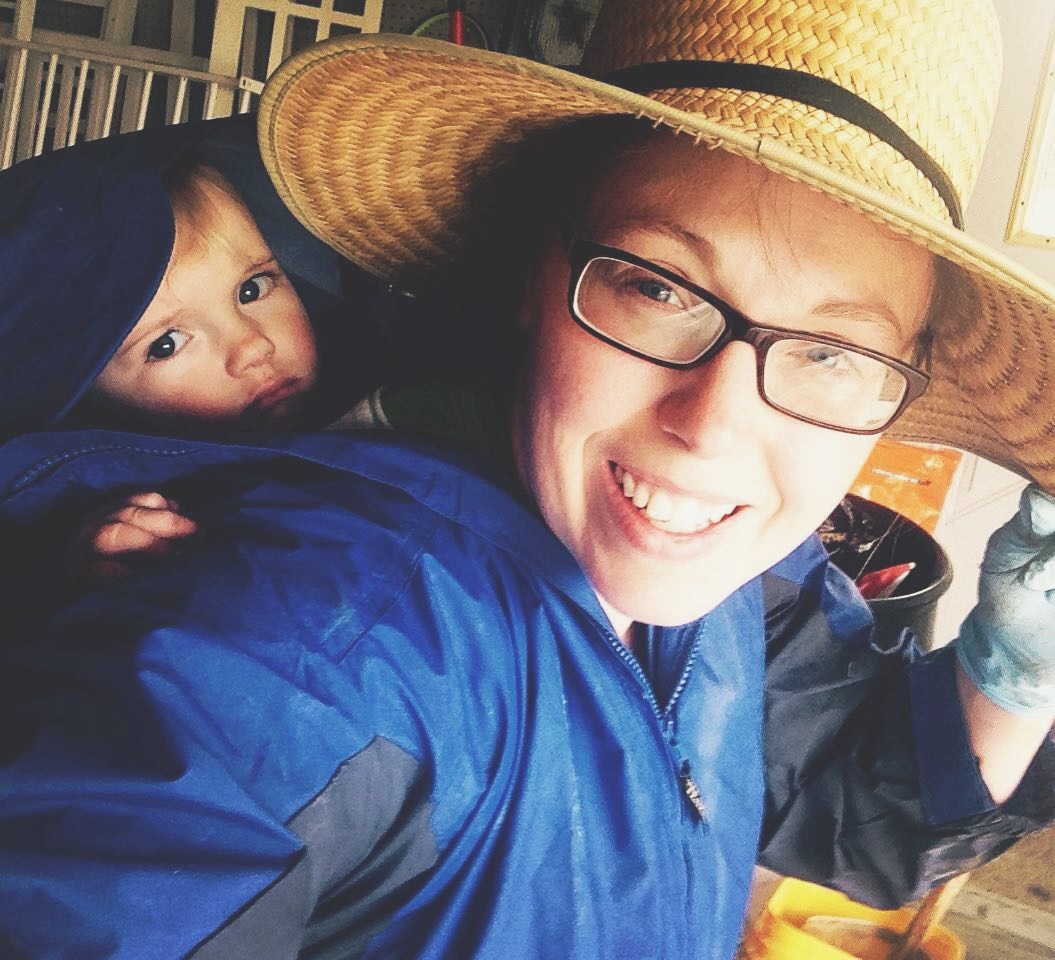OUR STORY
It all starts with a sprout….
Growing up, I (Krista) lived on a small homestead where my parents worked hard all summer to raise enough food for our family of six. My parents both came from agriculture backgrounds and know the value of hard work. My mom told stories of her and her sister riding bareback on their horses through the pastures, and the family's pet pig Petunia. My father told stories of when he was a young man, his family lived and worked on a large farm where they raised 100’s of hogs, poultry, and sheep. As a teenager and the oldest of 5, he & his brother were responsible for the care of the animals, while my Grandpa worked the fields and Grandma cared for the other kids. As a child, I never really respected or understood how hard they all worked for the modest things they had, until my own adulthood. After proclaiming I would never return to the country as a headstrong teenager, I headed off for the bright lights of the city.
My Grandparents, father and 4 siblings.
For the love of all things unhealthy…
After many years of fast-paced city life and two kids, I found myself struggling with serious chronic fatigue and chronic pain. In 2006, I was diagnosed with “Hashimoto’s Thyroiditis” an autoimmune condition. My doctor told me the only way to manage it would be with lifelong thyroid medication. Around the same time, my oldest daughter was diagnosed with ADHD. I began to feel like we were missing something, I wanted nothing more than to feel better and to help her. I began taking note of our lifestyle and the foods we were eating, learning about modern agriculture practices and the garbage in our Standard American Diet or the “SAD diet”. We slowly began changing our diets and eating more clean foods and cutting out processed junk. My daughter’s symptoms improved dramatically. For me, however, my symptoms got worse and I continued to struggle with my weight and fatigue. In 2008, my fatigue became such an issue that I feared driving after more than one occasion of dozing off behind the wheel. Fast forwarding 7 years, through a miscarriage and 3 more pregnancies, I was sick and tired of being sick and tired. The day I went into labor with our last son in 2015, I topped the scale at close to 250lbs. I knew I had to get serious about fixing myself and I was determined to use healthy quality foods and supplements as my medicine. My health journey made us realize what few convenient, affordable options for local clean food existed. Little did we know, at the beginning of this long quest, we would feel called to start a family farm of our own, for people like us that care deeply about their food.
Baby belly #5 was no joke! He came at 42 weeks 6 days.
Be the change we wanted to see in the world…
After much reading and research, in 2010 we started out with three little backyard city chickens, numerous raised garden beds and a few fruit trees. After 5 years of Urban farming, we finally found our small farm. In August of 2015, we moved from the suburbs of Columbus to Alexandria with our 5 kids (sprouts). Life with 5 kids is never dull, but adding 8.5 acres and lots of creatures, made that ring even truer! With the baby in a backpack carrier and a 2-year-old in tow, we trudged outside at every opportunity. We cut trees, we tilled garden beds, we built and worked and sweated! By the summer of 2018, we had already outgrown our first farm property and we picked up everyone, animals included and moved again to 14.5 acres a few miles from the first farm. We've come a long way from our 3 little backyard chickens in 2010, to over 350 chickens, 90 turkeys, 7 hogs, and a small herd of cattle summer 2018. Our family is adapting and thriving, my health is improving and I've found my life calling. Life on the farm is filled with exciting discoveries and challenges all the time. I wouldn't trade one crazy moment, even the hard ones. We hope you will join us in our adventures.
~Krista
He spent most of his first 2 years in that carrier!
















